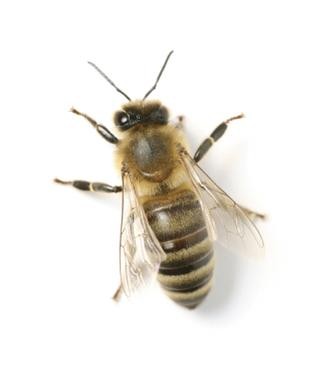The song sparrows are out this fine April afternoon, along with the rain and Jim Stein's bees -- a few hundred thousand of them, flying hither and yon, foraging for food.
"They don't stay in the neighborhood," Stein says with a shrug. "You can't put your bees on a leash."
A leather-tough septuagenarian with the physique of a sprinter or a scholastic strong safety, Stein favors plaid shirts, blue jeans and work shoes. He holds sway in a home of red brick and white columns, set back from Shaler's busy Mount Royal Boulevard. "This is a beekeeping house," he gestures at rooms chock-a-block in chaos, little pieces of the operation just about everywhere.
Over here, for example, is an extractor, a motorized centrifuge in which Stein can place six honey-rich frames, flip the switch and have the nectar spun out. Over there are 40-pound holding tubs for the honey -- and there, a litter of glass jars and paper labels for his spring and fall blends.
Although the bees have been hitting the 'hood since late February, it's too early to harvest the honey. But with each of Stein's 14 hives housing up to 50,000 bees, by late spring or early summer at the latest, there'll be plenty to retrieve, process and sell -- at a bargain-basement price of five dollars for a one-pound jar.
"I don't do this for income," he says, gesturing across his spacious backyard at the white, 16-by-20-inch box beehives. "I'm happy to break even."
Spoken like a man who doesn't need the money. Stein is blissfully retired from a career as a chemical engineer and systems analyst -- and, yes, a stint as a restaurateur. Back in 1985, when Stein was running Shaler's now-defunct Eat Your Heart Out, a chatty customer piqued his interest by discussing bees. Stein plopped down $85 for a 3-pound bag of 10,000 Sears bees -- a queen, her workers and drones -- and the operation took flight.
He quickly discovered that beekeeping is a daily pursuit, with tasks ranging from feeding the bees in winter (a kind of sugar candy or sugar-water mixture, depending on the temperature) to extracting the honey and tuning up the equipment. So Stein began selling the product. "I'm not a hobbyist anymore," he admits, though Stein Apiary is a mere flyspeck when compared to commercial operations, which can run to 70,000 hives.
All told, Stein's hives produce roughly 800 pounds of honey a year, most of which goes to the cognoscenti: members of his church choir, the folks at the library where he volunteers, loyalists who stop by the house for a pound or two of his award-winning product. (Stein eschews farmers' markets and the like -- too many fees and too much palaver for a quiet, small-time beekeeper.)
Stein visits his hives wearing a veil, and work gloves if the bees are feeling frisky and likely to sting. He carries with him the beekeeper's ubiquitous smoker, the scent of which reminds bees of a forest fire, prompting them to hunker down and start packing in their own product, adding the proverbial extra layer of fat if they have to flee the hive. Stein goes about his business at each hive -- removing and cleaning all 10 interior frames, each thick with honey and wax.
His bees will fly as far as two-and-a-half miles away, seeking pollen and nectar. Western Pennsylvania is a honey haven, offering a great mix of flowers and trees. Within their radius, Stein's bees are likely to gobble dandelions; blossoms from maple, apple, pear and cherry trees; goldenrod; witch hazel; and an invasive species called Japanese knotweed, a bamboo-like plant that can grow up to 12 feet high and whose nectar produces a wonderfully dark, sweet fall honey.
How do the little fellows know to come home? "Every hive has a scent to it," Stein says. If, perchance, the bees stumble to the wrong door, guard bees attached to the hive shoo them off.
"Somehow they know" if bees don't belong, Stein says, shaking his head. "It's amazing. They're really organized.
"That's the reason I'm a beekeeper," he adds. "I learn something new every day. So while beekeeping has been around since the pharaohs -- we have hieroglyphics to prove that -- it isn't what it was in grandpap's time. Nature keeps changing -- it's always evolving. There are always new mites and blights that attack bees. Stinkbugs eat plant and tree blossoms. As beekeepers, we have to meet that challenge. We interact with the world."



















